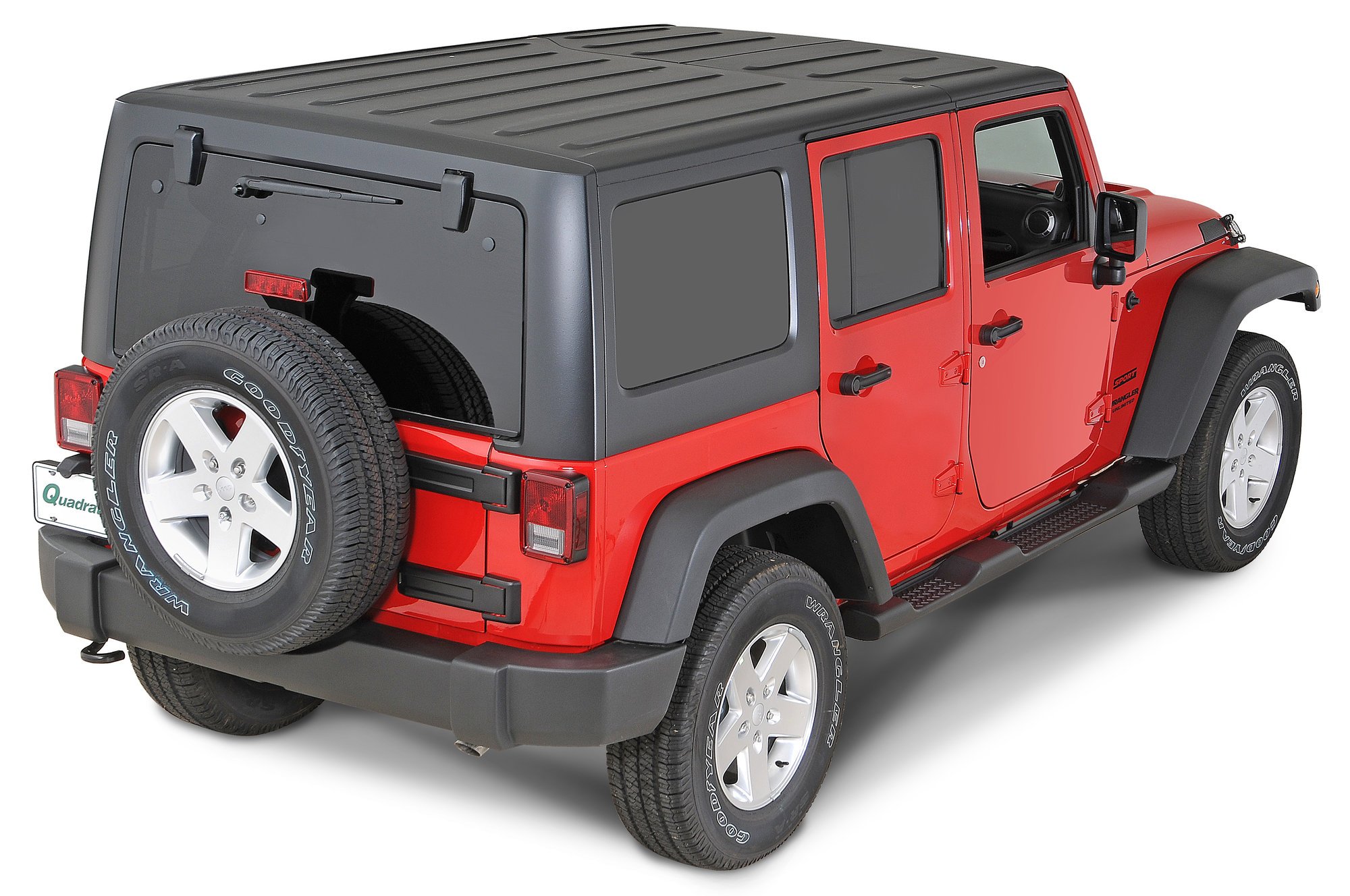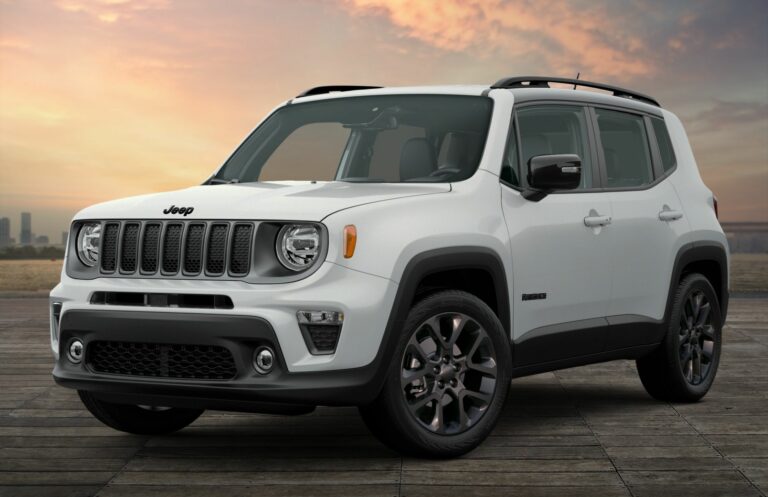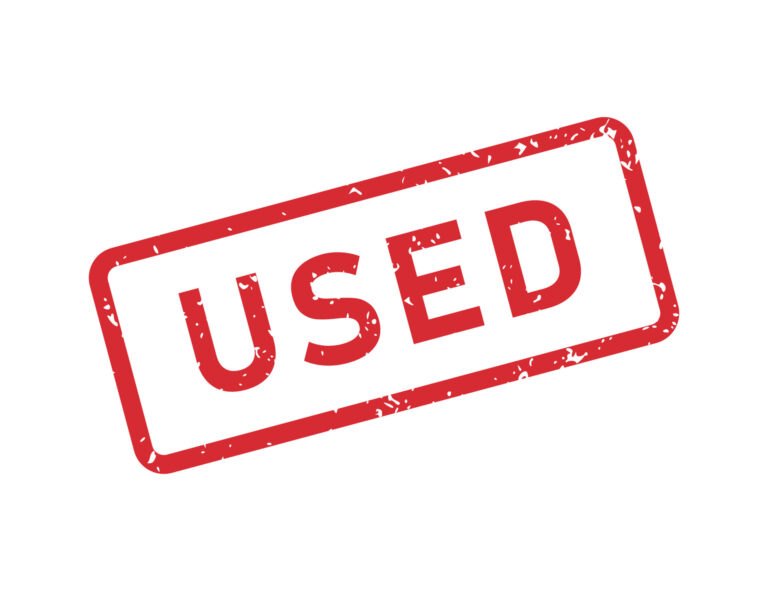Used Jeep Hard Tops For Sale: Your Ultimate Guide to Finding the Perfect Lid
Used Jeep Hard Tops For Sale: Your Ultimate Guide to Finding the Perfect Lid jeeps.truckstrend.com
The iconic Jeep Wrangler, with its unparalleled off-road prowess and open-air freedom, offers an experience unlike any other vehicle. While many enthusiasts cherish the soft-top convertible feel, there comes a time for many Jeep owners when the practicality, security, and comfort of a hard top become indispensable. Whether you’re battling harsh weather, seeking enhanced security for your gear, or simply desiring a quieter ride, a hard top transforms your Jeep’s functionality.
However, purchasing a brand-new hard top from the dealership can be a significant investment, often running into thousands of dollars. This is where the vibrant market for used Jeep hard tops for sale becomes incredibly appealing. Opting for a pre-owned hard top offers a cost-effective solution, allowing Jeep owners to enjoy the myriad benefits of a solid roof without breaking the bank. This comprehensive guide will navigate you through everything you need to know about finding, evaluating, and installing a used hard top, ensuring you make an informed and satisfying purchase.
Used Jeep Hard Tops For Sale: Your Ultimate Guide to Finding the Perfect Lid
Why Choose a Hard Top Over a Soft Top?
Before diving into the specifics of buying used, it’s essential to understand the core advantages a hard top offers, justifying its place as a crucial accessory for many Jeep owners.
- Enhanced Security: A hard top provides a much more robust barrier against theft compared to a fabric soft top. It deters casual break-ins and offers better protection for valuables stored inside.
- Superior Weather Protection: From torrential rain and heavy snow to blistering sun and biting winds, a hard top offers a sealed, insulated cabin. This is particularly vital for those living in climates with extreme weather conditions, ensuring a dry, warm, or cool interior.
- Reduced Noise and Improved Comfort: Hard tops significantly dampen road noise, wind noise, and ambient sounds, leading to a much quieter and more comfortable ride, especially on highways or during long journeys. The rigid structure also provides better insulation against temperature fluctuations.
- Durability and Longevity: Constructed from fiberglass or composite materials, hard tops are built to last. They are resistant to tears, fading, and degradation that can affect soft tops over time, offering a long-term solution.
- Aesthetics and Customization: Many owners prefer the rugged, finished look a hard top gives their Jeep. They can also be painted to match the vehicle’s color, offering a seamless and personalized appearance.

The Appeal of Buying Used: Benefits and Considerations
The decision to go the pre-owned route for a Jeep hard top comes with a distinct set of advantages, alongside important factors to consider.
Benefits of Buying Used
- Significant Cost Savings: This is undoubtedly the biggest draw. Used hard tops can be found for a fraction of the cost of new ones, often saving you hundreds, if not thousands, of dollars.
- Availability: For older Jeep models (like TJ, YJ, or even early JK generations), finding new OEM hard tops can be challenging or impossible. The used market offers a vast pool of options for various generations.
- Sustainability: Buying used is an environmentally friendly choice, reducing demand for new manufacturing and giving a second life to existing products.
- Immediate Gratification: Unlike ordering a new hard top which might involve waiting for production and shipping, a used hard top can often be picked up and installed relatively quickly.

![]()
Considerations and Potential Challenges
While beneficial, purchasing a used hard top requires diligence to avoid pitfalls:
- Condition Assessment: Used items come with wear and tear. You must thoroughly inspect for scratches, cracks, sun fading, and the condition of seals and windows.
- Compatibility: Jeep hard tops are highly specific to model year and door count (2-door vs. 4-door). A hard top from a JK will not fit a TJ, and a 4-door JK hard top will not fit a 2-door JK. This is the most critical factor.
- Missing Parts: Used tops might come without all necessary installation hardware (bolts, latches, wiring harnesses for rear defroster/wiper). Factor in the cost and effort of sourcing these.
- Warranty: Most used sales are "as-is," meaning no warranty from the seller or manufacturer.
- Shipping/Transportation: Hard tops are large and bulky. Local pick-up is often preferred, but long-distance purchases can incur significant freight shipping costs.
Types of Used Jeep Hard Tops and Their Compatibility
Understanding the different types of hard tops and their specific fitment is paramount. A mistake here will render your purchase useless.
Factory OEM Hard Tops
These are the most common and generally preferred options on the used market, designed by Jeep specifically for their vehicles.
- Full Hard Tops:
- YJ (1987-1995): Typically a single-piece design, often with sliding side windows.
- TJ (1997-2006): Similar to YJ, usually a single piece. The extended "LJ" (2004-2006 Wrangler Unlimited) requires a longer hard top.
- JK (2007-2018): Introduced the popular "Freedom Top" system, consisting of a large rear section and two removable front panels. Available for both 2-door and 4-door models, but not interchangeable.
- JL (2018-Present): Also uses a Freedom Top design, but with updated latching mechanisms and slightly different dimensions than the JK. Available for 2-door and 4-door models, not interchangeable.
- Gladiator JT (2020-Present): Specific hard tops for the truck bed and cab, distinct from Wrangler tops.
Crucial Compatibility Note: Jeep hard tops are NOT interchangeable between generations (e.g., a JK hard top will not fit a TJ). Furthermore, within the JK and JL generations, 2-door hard tops are NOT compatible with 4-door models, and vice-versa. Always verify the exact year and door count of the hard top you are considering against your Jeep’s specifications.
Aftermarket Hard Tops (Used)
Several reputable aftermarket companies (e.g., Bestop, Smittybilt, GR8TOPS) also produce hard tops. These can sometimes offer unique features or designs. When buying used aftermarket tops, ensure they are specifically designed for your Jeep’s model and year. Research the brand’s reputation for quality and fitment.
Where to Find Used Jeep Hard Tops For Sale
The market for used hard tops is robust. Knowing where to look will significantly improve your chances of finding a good deal.
-
Online Marketplaces:
- Craigslist/Facebook Marketplace: Excellent for local finds, allowing for in-person inspection and avoiding shipping costs. Use broad search terms and filter by location.
- eBay: Offers a wider geographical reach but requires careful attention to seller reputation, shipping costs, and detailed descriptions/photos.
- Dedicated Jeep Forums & Classifieds: Websites like JeepForum.com, JLWranglerForums.com, and WranglerForum.com often have "for sale" sections where members list parts. These communities can be very knowledgeable and trustworthy.
-
Local Jeep Dealerships: Sometimes, dealerships take Jeeps in trade with hard tops that the new owner doesn’t want, or they might have damaged ones they’re selling cheap. It’s worth a call.
-
Off-Road/4×4 Shops: These specialized shops often buy and sell used parts, or they might know customers who are looking to sell their hard tops.
-
Salvage Yards/Auto Recyclers: If a Jeep with a good hard top ends up in a salvage yard due to front-end damage, the top might be perfectly fine. Call local yards and inquire.
-
Word of Mouth/Local Jeep Clubs: Networking with other Jeep enthusiasts in your area can lead to direct sales or tips on where to find a top.
A Comprehensive Buying Guide: What to Look For
Once you’ve located a potential hard top, a thorough inspection is crucial. Don’t rush the process.
Inspection Checklist
- Exterior Condition:
- Scratches and Dents: Minor surface scratches are common and often polish out or can be touched up. Deep scratches or dents indicate potential impacts.
- Cracks: This is the most critical issue. Hairline cracks can expand and lead to leaks. Pay close attention to corners, around windows, and mounting points. Avoid tops with significant structural cracks unless you’re prepared for costly fiberglass repair.
- Paint Fading/Discoloration: Common on older tops. Can be fixed with a repaint, but factor the cost into your budget.
- Window Integrity:
- Cracks or Chips: Inspect all windows (rear and side sliders if applicable) for damage. Replacements can be expensive.
- Defroster Grid (if applicable): Ensure the lines are intact and not scratched off. Test if possible.
- Wiper Blade (if applicable): Check the condition of the wiper arm and blade.
- Seals and Gaskets:
- Condition: These are vital for waterproofing and noise reduction. Inspect all rubber seals around windows, doors, and the base of the top where it meets the Jeep body. Look for dry rot, tears, hardening, or missing sections. Damaged seals are a primary cause of leaks and can be costly to replace.
- Pliability: The rubber should still be soft and flexible, not brittle.
- Hardware:
- Latches and Bolts: Ensure all internal and external latches, clamps, and bolts are present and functional. Missing or broken hardware can make installation difficult or insecure.
- Wiring Harness (for rear defroster/wiper): Confirm the harness is present and undamaged.
- Interior Condition:
- Headliner: Check for tears, stains, water damage, or mold. A sagging headliner might indicate past water intrusion.
- Fitment Test (If Possible): The absolute best scenario is to test fit the hard top on your Jeep before purchase. This immediately verifies compatibility and allows you to check for proper alignment and seal compression. If not possible, take precise measurements and compare them to your Jeep’s specifications.
Verifying Compatibility
Beyond visual inspection, double-check the hard top’s compatibility:
- Model Year: Confirm the hard top’s original vehicle year matches the compatible range for your Jeep.
- Door Count: Reiterate – 2-door and 4-door tops are NOT interchangeable.
- VIN (if available): Sometimes, sellers can provide the VIN of the Jeep the top came from, which can help verify its exact model.
Negotiation Tips
- Be Prepared: Know the market value for new and used tops in various conditions.
- Highlight Flaws: Use any discovered flaws (scratches, missing hardware, worn seals) as leverage for negotiation.
- Factor in Repair Costs: Estimate the cost of any necessary repairs (e.g., new seals, paint touch-ups, sourcing hardware) and factor that into your offer.
- Be Patient: If you don’t find the perfect top immediately, wait for the right one.
Installation and Maintenance Tips
Once you’ve secured your used hard top, proper installation and ongoing maintenance will ensure its longevity and performance.
Installation
- Two-Person Job (Minimum): Hard tops are heavy and awkward. Always use at least two strong people to lift and position the top. A hoist system is highly recommended for single-person installation/removal.
- Clean Mating Surfaces: Ensure the top of your Jeep’s body tub and the hard top’s bottom edges are clean and free of debris for a good seal.
- Proper Alignment: Carefully align the hard top with the bolt holes and latch points on your Jeep.
- Secure All Hardware: Tighten all bolts and latches according to your Jeep’s manual (or the hard top’s if aftermarket). Do not overtighten, as this can damage the fiberglass or seals.
- Check Seals: After installation, spray water around the seams with a hose to check for any leaks. Address any leaks immediately by adjusting the top or replacing faulty seals.
Maintenance
- Regular Cleaning: Wash your hard top regularly with car soap to remove dirt, grime, and environmental contaminants.
- Seal Inspection: Periodically inspect all rubber seals for cracks, dry rot, or compression set. Treat seals with a rubber conditioner (like silicone spray or dedicated rubber protectant) to keep them pliable and prevent drying out.
- Lubricate Latches: Apply a small amount of lubricant (e.g., silicone grease) to the moving parts of latches and hinges to ensure smooth operation.
- Proper Storage: If you remove your hard top for the summer, store it properly. Use a hard top cart or hoist system. Store it indoors, away from direct sunlight and extreme temperatures, to prevent material degradation.
Potential Challenges and Solutions
Even with careful planning, challenges can arise when buying used.
- Finding the Right Fit:
- Challenge: The exact hard top for your specific model/year is hard to find locally.
- Solution: Expand your search radius on online marketplaces, consider freight shipping (get quotes beforehand), or be patient and check listings regularly.
- Damaged/Missing Parts:
- Challenge: The top is in good shape but missing hardware or has worn seals.
- Solution: Factor the cost of replacement parts into your offer. Many parts (seals, bolts, latches) can be sourced new from dealerships or aftermarket suppliers, or sometimes used from parts Jeeps.
- High Shipping Costs:
- Challenge: You find a great deal far away, but shipping is exorbitant.
- Solution: Prioritize local pick-up. If shipping is unavoidable, get multiple quotes from freight companies. Sometimes, arranging your own pick-up with a U-Haul or rental trailer is cheaper than professional freight.
- Scammers:
- Challenge: Encountering fraudulent listings or uncooperative sellers.
- Solution: Always insist on seeing the hard top in person before payment. If buying remotely, use secure payment methods that offer buyer protection, request detailed photos/videos, and potentially use a third-party inspection service if the value warrants it. Never wire money or use untraceable payment methods for remote purchases.
Used Jeep Hard Top Estimated Price Guide
Please note: Prices for used Jeep hard tops can vary dramatically based on condition, color, location, market demand, and the seller’s urgency. This table provides a general estimated range and should be used as a guideline, not a definitive price list.
| Jeep Model/Generation | Hard Top Type | Condition (General) | Estimated Price Range (USD) | Notes |
| :——————– | :———— | :—————— | :————————– | :————————————————————————————————————————————————————————————————————————————————————————————————————————————————————————————————————————————————————————————————————————————————————————————————————————————————————————————————————————————————————————————————————————————————————————————————————————————————————————————————————————————————————————————————————————————————————————————————————————————————————————————————————————————————————————————————————————————————————————————————————————————————————————————————————————————————————————————————————————————————————————————————————————————————————————————————————————————————————————————————————————————————————————————————————————————————————————————————————————————————————————————————————————————————————————————————————————————————————————————————————————————————————————————————————————————————————————————————————————————————————————————————————————————————————————————————————————————————————————————————————————————————————————————————————————————————————————————————————————————————————————————————————————————————————————————————————————————————————————————————————————————————————————————————————————————————————————————————————————————————————————————————————————————————————————————————————————————————————————————————————————————————————————————————————————————————————————————————————————————————————————————————————————————————————————————————————————————————————————————————————————————————————————————————————————————————————————————————————————————————————————————————————————————————————————————————————————————————————————————————————————————————————————————————————————————————————————————————————————————————————————————————————————————————————————————————————————————————————————————————————————————————————————————————————————————————————————————————————————————————————————————————————————————————————————————————————————————————————————————————————————————————————————————————————————————————————————————————————————————————————————————————————————————————————————————————————————————————————————————————————————————————————————————————————————————————————————————————————————————————————————————————————————————————————————————————————————————————————————————————————————————————————————————————————————————————————————————————————————————————————————————————————————————————————————————————————————————————————————————————————————————————————————————————————————————————————————————————————————————————————————————————————————————————————————————————————————————————————————————————————————————————————————————————————————————————————————————————————————————————————————————————————————————————————————————————————————————————————————————————————————————————————————————————————————————————————————————————————————————————————————————————————————————————————————————————————————————————————————————————————————————————————————————————————————————————————————————————————————————————————————————————————————————————————————————————————————————————————————————————————————————————————————————————————————————————————————————————————————————————————————————————————————————————————————————————————————————————————————————————————————————————————————————————————————————————————————————————————————————————————————————————————————————————————————————————————————————————————————————————————————————————————————————————————————————————————————————————————————————————————————————————————————————————————————————————————————————————————————————————————————————————————————————————————————————————————————————————————————————————————————————————————————————————————————————————————————————————————————————————————————————————————————————————————————————————————————————————————————————————————————————————————————————————————————————————————————————————————————————————————————————————————————————————————————————————————————————————————————————————————————————————————————————————————————————————————————————————————————————————————————————————————————————————————————————————————————————————————————————————————————————————————————————————————————————————————————————————————————————————————————————————————————————————————————————————————————————————————————————————————————————————————————————————————————————————————————————————————————————————————————————————————————————————————————————————————————————————————————————————————————————————————————————————————————————————————————————————————————————————————————————————————————————————————————————————————————————————————————————————————————————————————————————————————————————————————————————————————————————————————————————————————————————————————————————————————————————————————————————————————————————————————————————————————————————————————————————————————————————————————————————————————————————————————————————————————————————————————————————————————————————————————————————————————————————————————————————————————————————————————————————————————————————————————————————————————————————————————————————————————————————————————————————————————————————————————————————————————————————————————————————————————————————————————————————————————————————————————————————————————————————————————————————————————————————————————————————————————————————————————————————————————————————————————————————————————————————————————————————————————————————————————————————————————————————————————————————————————————————————————————————————————————————————————————————————————————————————————————————————————————————————————————————————————————————————————————————————————————————————————————————————————————————————————————————————————————————————————————————————————————————————————————————————————————————————————————————————————————————————————————————————————————————————————————————————————————————————————————————————————————————————————————————————————————————————————————————————————————————————————————————————————————————————————————————————————————————————————————————————————————————————————————————————————————————————————————————————————————————————————————————————————————————————————————————————————————————————————————————————————————————————————————————————————————————————————————————————————————————————————————————————————————————————————————————————————————————————————————————————————————————————————————————————————————————————————————————————————————————————————————————————————————————————————————————————————————————————————————————————————————————————————————————————————————————————————————————————————————————————————————————————————————————————————————————————————————————————————————————————————————————————————————————————————————————————————————————————————————————————————————————————————————————————————————————————————————————————————————————————————————————————————————————————————————————————————————————————————————————————————————————————————————————————————————————————————————————————————————————————————————————————————————————————————————————————————————————————————————————————————————————————————————————————————————————————————————————————————————————————————————————————————————————————————————————————————————————————————————————————————————————————————————————————————————————————————————————————————————————————————————————————————————————————————————————————————————————————————————————————————————————————————————————————————————————————————————————————————————————————————————————————————————————————————————————————————————————————————————————————————————————————————————————————————————————————————————————————————————————————————————————————————————————————————————————————————————————————————————————————————————————————————————————————————————————————————————————————————————————————————————————————————————————————————————————————————————————————————————————————————————————————————————————————————————————————————————————————————————————————————————————————————————————————————————————————————————————————————————————————————————————————————————————————————————————————————————————————————————————————————————————————————————————————————————————————————————————————————————————————————————————————————————————————————————————————————————————————————————————————————————————————————————————————————————————————————————————————————————————————————————————————————————————————————————————————————————————————————————————————————————————————————————————————————————————————————————————————————————————————————————————————————————————————————————————————————————————————————————————————————————————————————————————————————————————————————————————————————————————————————————————————————————————————————————————————————————————————————————————————————————————————————————————————————————————————————————————————————————————————————————————————————————————————————————————————————————————————————————————————————————————————————————————————————————————————————————————————————————————————————————————————————————————————————————————————————————————————————————————————————————————————————————————————————————————————————————————————————————————————————————————————————————————————————————————————————————————————————————————————————————————————————————————————————————————————————————————————————————————————————————————————————————————————————————————————————————————————————————————————————————————————————————————————————————————————————————————————————————————————————————————————————————————————————————————————————————————————————————————————Used Jeep Hard Tops For Sale: Your Definitive Guide to a Smarter Upgrade
For Jeep owners, the choice between a soft top and a hard top isn’t merely about aesthetics; it’s a fundamental decision impacting security, comfort, and versatility. While the open-air exhilaration of a soft top is quintessential to the Jeep experience, the practical advantages of a solid roof become undeniable for many. A hard top provides superior weather protection, enhanced security for your belongings, improved insulation against noise and temperature extremes, and a more robust, long-lasting structure. However, the investment in a brand-new, factory-fresh hard top can be substantial, often representing a significant portion of a Jeep’s value. This is where the burgeoning market for used Jeep hard tops for sale emerges as a highly attractive and intelligent alternative.
Opting for a pre-owned hard top allows enthusiasts to gain all the benefits of a durable, secure, and quiet cabin without the hefty price tag of a new unit. It’s a savvy move that not only saves money but also contributes to sustainability by giving a second life to quality components. This comprehensive guide will delve deep into every facet of acquiring a used Jeep hard top, from understanding its benefits and compatibility nuances to meticulously inspecting potential purchases and ensuring a smooth installation process. Whether you’re a first-time Jeep owner looking to upgrade or a seasoned Jeeper seeking a seasonal swap, this article will equip you with the knowledge to make an informed and successful purchase.
Why a Hard Top is a Smart Investment for Your Jeep
While the soft top embodies the spirit of open-air adventure, a hard top brings a layer of practicality and protection that many owners come to appreciate, especially as their usage patterns evolve.
-
Unrivaled Security: A fabric soft top, by its very nature, is vulnerable to cuts and forced entry, making your Jeep and its contents an easier target for theft. A rigid fiberglass or composite hard top acts as a formidable deterrent, significantly increasing the security of your vehicle and personal belongings. This peace of mind is invaluable, particularly in urban environments or when parking your Jeep overnight.
-
Superior Weather Protection: Jeeps are built for all terrains, and often, all weather. A hard top provides excellent insulation against the elements. It seals out rain, snow, and strong winds more effectively than a soft top, keeping your interior dry and preventing drafts. In extreme temperatures, its insulating properties help maintain a more comfortable cabin, keeping heat in during winter and cool air in during summer, thus improving climate control efficiency.
-
Significant Noise Reduction & Enhanced Comfort: One of the most noticeable upgrades a hard top offers is a quieter ride. The solid construction and better sealing drastically reduce wind noise, road noise, and ambient sounds that often permeate a soft top. This reduction in noise fatigue makes long drives more enjoyable, allows for clearer conversations, and improves the quality of your audio system. The rigidity also contributes to a more stable and less "flappy" feel at highway speeds.
-
Durability and Longevity: Manufactured from robust materials like fiberglass or composite, hard tops are designed for resilience. They are impervious to rips, tears, and the gradual degradation that sunlight and weather can inflict on fabric soft tops over time. With minimal maintenance, a hard top can last the lifetime of your vehicle, making it a truly durable accessory.
-
Aesthetic Appeal and Customization: For many, the classic, rugged profile of a Jeep is completed by a hard top. It provides a more finished and integrated look compared to a folded soft top or bikini top. Furthermore, hard tops can be painted to match your Jeep’s body color, or even custom-painted, allowing for a personalized touch that enhances the vehicle’s overall appearance.
The Allure of Buying Used: Benefits and Critical Considerations
The decision to acquire a pre-owned hard top is driven primarily by economic advantages, but it also comes with its own set of considerations that require careful attention.
Undeniable Benefits of a Used Hard Top
- Exceptional Cost Savings: This is, without a doubt, the most compelling reason. New OEM hard tops can range from $2,500 to upwards of $5,000 or more, depending on the model and features (like tinted windows, rear wiper/defroster). Used hard tops, however, can often be found for a fraction of that cost, sometimes as low as $500 to $2,000, representing substantial savings.
- Wider Availability, Especially for Older Models: If you own an older Jeep generation (YJ, TJ, or even early JK models), finding a brand-new OEM hard top might be difficult or even impossible. The used market, however, is a treasure trove, offering a diverse selection of hard tops for various model years, making it easier to find the perfect fit for your specific vehicle.
- Environmental Sustainability: Choosing a used hard top is an eco-conscious decision. It promotes recycling and reduces the demand for new manufacturing, lessening your carbon footprint and contributing to a more sustainable automotive accessories market.
- Immediate Access: Unlike new orders that might involve production lead times and shipping delays, a used hard top is often available for immediate pick-up and installation, allowing you to enjoy its benefits without a prolonged wait.
Important Considerations and Potential Challenges
While the benefits are significant, navigating the used market requires diligence and an understanding of potential drawbacks.
- Thorough Condition Assessment is Paramount: The most critical aspect of buying used is evaluating the hard top’s condition. You must meticulously inspect for scratches, dents, chips, and, most importantly, cracks in the fiberglass or composite material. Pay close attention to the integrity of seals, windows, and the headliner.
- Absolute Compatibility is Non-Negotiable: This cannot be stressed enough. Jeep hard tops are highly specific. A top designed for a TJ will not fit a JK. A 2-door JK hard top will not fit a 4-door JK, and vice-versa. Even within the same generation, minor year-to-year changes can sometimes affect fitment. Always double-check the exact model year and door configuration.
- Missing or Damaged Components: Used hard tops might not come with all the necessary installation hardware (bolts, latches, wiring harnesses for rear defroster/wiper). Factor in the potential cost and effort of sourcing these parts, either new or used.
- Lack of Warranty: Most used hard top sales are "as-is," meaning there’s no warranty from the seller or manufacturer. Any issues discovered after purchase are typically your responsibility.
- Logistics and Transportation: Hard tops are bulky and surprisingly heavy. Transporting them requires a truck, a large trailer, or specialized freight shipping, which can be costly for long distances. Local pick-up is often the most practical and cost-effective solution.
Navigating the Hard Top Landscape: Types and Compatibility
Understanding the specific types of hard tops and their strict compatibility requirements is the cornerstone of a successful purchase. A beautiful, well-priced hard top is useless if it doesn’t fit your Jeep.
Factory OEM Hard Tops
These are original equipment manufacturer hard tops, designed by Jeep specifically for their vehicles. They are generally the most sought-after due to guaranteed fitment and quality.
- Jeep Wrangler YJ (1987-1995): Typically a single-piece hard top, often featuring sliding side windows.
- Jeep Wrangler TJ (1997-2006): Similar to the YJ, these are usually one-piece units. The extended wheelbase "LJ" (2004-2006 Wrangler Unlimited) requires a specific, longer hard top that will not fit a standard TJ.
- Jeep Wrangler JK (2007-2018): This generation introduced the revolutionary "Freedom Top" system. This design consists of a large rear section and two independent, removable front panels above the driver and passenger. JK hard tops are distinct for 2-door and 4-door models and are not interchangeable.
- Jeep Wrangler JL (2018-Present): The JL also



